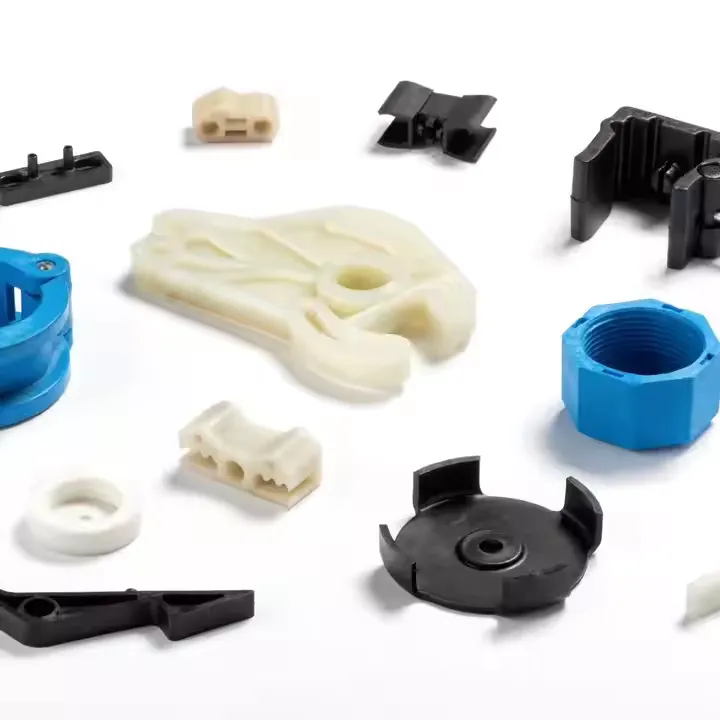Understanding the Critical Role of Speed in Modern Manufacturing
In today's fast-paced manufacturing landscape, time is more than just money – it's often the difference between market success and missed opportunities. When product development cycles are compressed and deadlines loom large, selecting the right 3D printing service becomes a pivotal decision that can significantly impact your project's timeline and ultimate success. The rapid evolution of additive manufacturing has created a diverse ecosystem of service providers, each offering unique capabilities and turnaround times.
The challenge lies not just in finding a 3D printing service that can deliver quality parts, but one that can consistently meet demanding timelines without compromising on precision or reliability. This comprehensive guide will help you navigate the selection process with a focus on lead time optimization while ensuring all other critical requirements are met.
Essential Factors in Evaluating 3D Printing Services
Technical Capabilities and Equipment
The foundation of any reliable 3D printing service lies in its technical infrastructure. Advanced manufacturing facilities equipped with the latest industrial-grade printers can significantly reduce production times through higher printing speeds and larger build volumes. Look for services that maintain a diverse printer fleet, enabling them to match the most suitable technology to your specific requirements.
Modern 3D printing services should offer multiple printing technologies such as FDM, SLA, SLS, and DMLS. This variety not only ensures optimal material selection but also allows for parallel production when multiple parts are needed, effectively reducing overall lead times.
Production Capacity and Workflow Optimization
A 3D printing service's ability to handle sudden volume increases while maintaining quick turnaround times is crucial. Evaluate their production capacity, including the number of machines, size of their facility, and level of automation in their workflow. Services that utilize advanced scheduling software and automated quality control processes can significantly reduce handling times and minimize delays.
Consider how the service provider manages their production queue and whether they offer priority processing options for time-critical projects. The most efficient providers implement smart queuing systems that optimize machine utilization while accommodating urgent orders.

Streamlining Communication and Project Management
Digital Infrastructure and Online Platforms
Leading 3D printing services invest in robust digital platforms that streamline the entire ordering process. Look for providers offering instant quoting systems, file analysis tools, and real-time project tracking capabilities. These features not only save time during the initial stages but also provide valuable visibility throughout the production process.
The ability to quickly upload files, receive automated design feedback, and make immediate adjustments can shave days off your project timeline. Advanced platforms may also offer material and process recommendations based on your specific requirements, further optimizing the production pathway.
Support Team Responsiveness
While automated systems are valuable, human expertise remains crucial, especially for complex or time-sensitive projects. Evaluate the responsiveness and technical knowledge of the service's support team. The best providers offer multiple communication channels and dedicated project managers who can quickly address concerns and implement solutions.
Look for 3D printing services that provide comprehensive DFM (Design for Manufacturing) feedback and can suggest optimizations to reduce production time without compromising quality. This proactive approach to problem-solving can prevent delays before they occur.
Geographic Location and Logistics Considerations
Strategic Manufacturing Locations
The physical location of your 3D printing service provider can significantly impact overall lead times. While digital file transfer is instantaneous, physical shipping still takes time. Consider services with multiple manufacturing locations or those strategically located near your delivery points.
Some advanced service providers operate distributed manufacturing networks, allowing them to route orders to the facility closest to the delivery destination. This approach can substantially reduce shipping times and associated costs.
Shipping and Delivery Options
Evaluate the range of shipping options available and the provider's partnerships with courier services. The best 3D printing services offer flexible delivery solutions, from standard shipping to same-day delivery for local customers. They should also have experience in international shipping and customs documentation if required.
Consider providers that integrate shipping logistics into their online platforms, offering transparent tracking and delivery estimates from the point of order. This integration helps in planning downstream processes and managing stakeholder expectations.
Quality Assurance and Consistency
Quality Control Processes
Speed should never come at the expense of quality. Leading 3D printing services implement robust quality control processes that are efficient yet thorough. Look for providers with established quality management systems and relevant industry certifications.
The most effective services integrate quality checks throughout the production process rather than relying solely on final inspection. This approach helps identify and resolve issues early, preventing time-consuming rework while maintaining high quality standards.
Documentation and Traceability
Professional 3D printing services maintain comprehensive documentation and traceability systems. This includes material certifications, process parameters, and quality inspection reports. While this might seem like additional overhead, well-organized documentation actually speeds up future orders and helps in quickly resolving any issues that arise.
Look for providers that offer digital access to all relevant documentation and maintain detailed records of previous projects. This capability can be particularly valuable when ordering repeat parts or scaling production.
Frequently Asked Questions
What turnaround time should I expect from a professional 3D printing service?
Typical turnaround times can range from 24 hours for rush orders to 5-7 business days for standard production. However, actual times depend on factors such as part complexity, material choice, post-processing requirements, and shipping location. The best providers offer multiple service levels to match different urgency needs.
How can I ensure my design is optimized for quick production?
Work closely with your chosen 3D printing service during the design phase. Submit files early for review, follow their design guidelines, and consider their feedback for design optimization. Simple adjustments like proper wall thickness and orientation can significantly reduce printing time while maintaining structural integrity.
What factors most commonly cause delays in 3D printing projects?
Common delay factors include incomplete or problematic design files, material availability, machine capacity during peak times, and complex post-processing requirements. Choosing a well-equipped 3D printing service with robust processes and clear communication channels helps minimize these potential delays.

